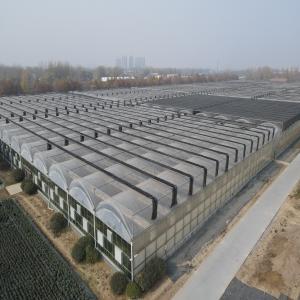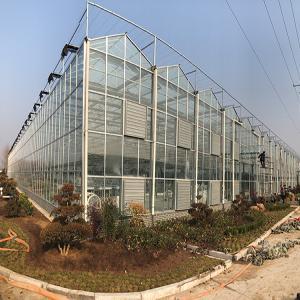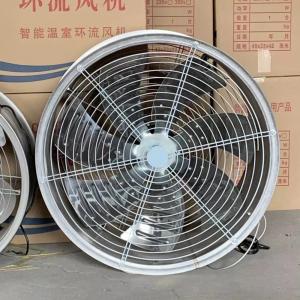Description
Advantages of Soilless Cultivation Greenhouses
——A Comprehensive Overview of Efficiency, Sustainability, and Innovation
1. Resource Efficiency: Water and Nutrient Conservation
· Water Savings: Soilless systems recirculate nutrient solutions, reducing water consumption by70–90%compared to traditional soil-based farming.
o Example: Hydroponic greenhouses in arid regions (e.g., Middle East) achieve sustainable production with minimal freshwater input.
· Nutrient Precision: Automated dosing systems deliver tailored nutrient mixes, eliminating runoff and ensuring optimal plant uptake.
2. Enhanced Crop Quality and Yield
· Faster Growth Cycles: Controlled environments accelerate photosynthesis and nutrient absorption, shortening harvest periods by25–50%.
· Uniformity: Root-zone temperature and pH consistency produce crops with uniform size, color, and nutritional value.
· Reduced Post-Harvest Losses: Clean, soil-free produce requires less washing and has a longer shelf life.
3. Pest and Disease Mitigation
· Soil-Borne Pathogen Elimination: By avoiding soil, systems prevent diseases likeFusarium wiltandPhytophthora, reducing pesticide use by60–80%.
· Isolated Environments: Closed greenhouses with HEPA filters and UV sterilization minimize insect infestations.
4. Climate Resilience and Year-Round Production
· Temperature Control: Heating/cooling systems maintain optimal growing conditions, enabling cultivation in extreme climates (e.g., Canada’s winters or UAE’s summers).
· Light Optimization: Supplemental LED lighting extends photoperiods, achieving3–4 harvests annuallyvs. 1–2 in open fields.
5. Space Optimization and Vertical Farming
· Vertical Stacking: Multi-tiered hydroponic/aeroponic racks increase yield per square foot by5–10xcompared to horizontal farming.
· Urban Integration: Rooftop and indoor greenhouses supply fresh produce to cities, cutting transportation emissions.
o Case Study:AeroFarms (New Jersey, USA)produces 2 million pounds of leafy greens annually in a 70,000 sq ft vertical farm.
6. Sustainability and Circular Economy
· Renewable Energy Integration: Solar panels and wind turbines power greenhouses, reducing reliance on fossil fuels.
· Waste Recycling: Closed-loop systems reuse condensed water vapor and capture CO2 for enhanced photosynthesis.
· Biodegradable Substrates: Coconut coir and rice husks replace non-renewable rockwool, lowering environmental impact.
7. Labor Efficiency and Automation
· Robotic Harvesting: AI-powered drones and grippers reduce labor costs by40–60%in large-scale operations.
· Remote Monitoring: IoT sensors track pH, EC, and humidity, enabling off-site management via smartphone apps.
8. Market Competitiveness and Profitability
· Premium Pricing: Pesticide-free, locally grown produce commands20–30% higher pricesin supermarkets.
· Reduced Supply Chain Risks: On-site greenhouses mitigate disruptions from extreme weather or geopolitical conflicts.
Conclusion
Soilless cultivation greenhouses represent a paradigm shift in agriculture, merging technological precision with ecological responsibility. By addressing water scarcity, climate variability, and food security, these systems pave the way for a sustainable, urbanized future of farming.
Keywords: Soilless Greenhouse, Vertical Farming, Hydroponics, Sustainable Agriculture, Climate Resilience
(Word Count: 450)
Note: Data sources include FAO reports, industry case studies (e.g., Plenty Unlimited, Infarm), and peer-reviewed journals on controlled-environment agriculture.





